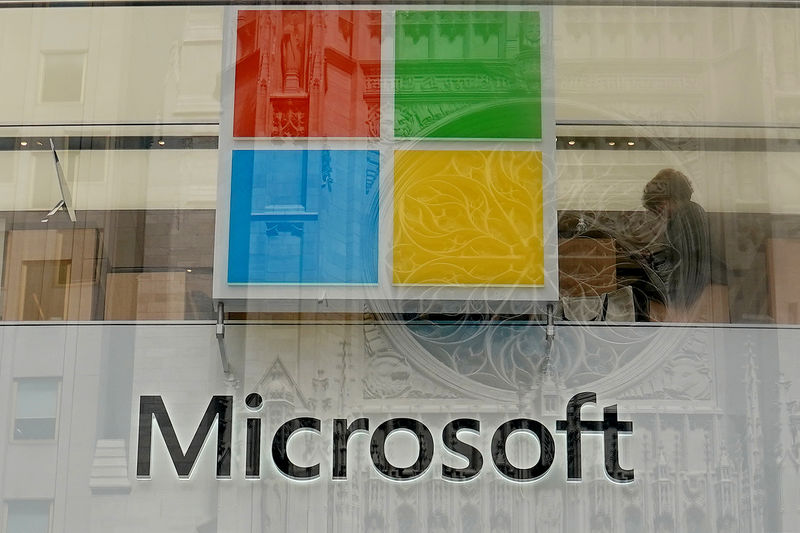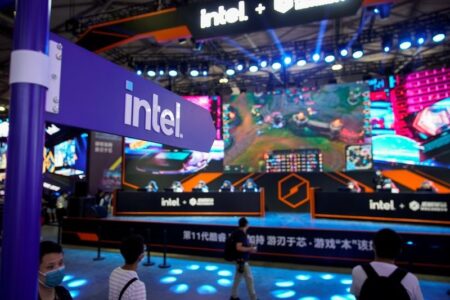ECARX, a key player in the electronic-vehicle architecture market, reported a 21% year-over-year increase in first-quarter revenue for 2024, reaching RMB928 million. Despite a competitive market leading to margin pressure on hardware products, the company is leveraging partnerships, such as with Microsoft (NASDAQ:), and focusing on innovation in automotive intelligence solutions to drive future growth.
ECARX aims to expand its customer base and enhance its research and development capabilities while optimizing its cost structure.
Key Takeaways
- ECARX’s Q1 revenue increased by 21% year-over-year, driven by growth in computing hardware goods and service revenue.
- The company announced strategic partnerships with Microsoft and plans to integrate large language models into digital cockpit solutions.
- Gross profit margin stood at 22%, with a slight decrease of 2% year-over-year.
- Operating expenses increased year-over-year due to investment in global markets and R&D expansion.
- Loss per share improved slightly to RMB0.84, from RMB0.87 in the previous quarter.
- ECARX has a strong cash position with RMB358 million in cash and restricted cash.
- The company is expanding manufacturing capabilities, including two new facilities in China and one outside China.
- Management is confident in the global market potential for autonomous driving and software-defined vehicles.
Company Outlook
- ECARX is pursuing high double-digit growth year-over-year and is working towards a break-even target through cost optimization and expense control.
- The company is actively engaged in discussions with European automakers and expects to announce significant progress in these partnerships in the near future.
Bearish Highlights
- Margin pressure on hardware products is expected due to intense market competition.
- Gross profit decreased by 2% year-over-year, despite an increase in revenue.
- Adjusted EBITDA loss increased year-over-year, although there was an improvement sequentially.
Bullish Highlights
- ECARX is expanding its international manufacturing capabilities to meet growing demand.
- The company is strengthening its partnerships, as seen with Microsoft and FAW, to enhance product capabilities and R&D processes.
- ECARX is focusing on software-defined vehicle market opportunities and autonomous driving technologies.
Misses
- The company reported a loss per share of RMB0.84, indicating ongoing challenges in achieving profitability.
- Despite revenue growth, the company is facing margin pressures and a need to optimize costs further.
Q&A Highlights
- ECARX’s management discussed the pipeline and synergies of the driving domain control business and the integration of large language models with Microsoft.
- The company’s technological advancements, such as the Antora product and partnership with Qualcomm (NASDAQ:), were highlighted.
- ECARX’s strategy for maintaining margins includes cost optimization and leveraging strategic partnerships.
ECARX (ticker not provided) is demonstrating a strong commitment to capturing the growth potential in the electronic-vehicle architecture space. With strategic moves such as partnerships with Microsoft and a focus on innovative automotive intelligence solutions, the company is positioning itself to capitalize on the expanding market for software-defined vehicles and autonomous driving technologies.
While financials reflect margin pressures and a need to improve profitability, ECARX’s expansion plans and confidence in the global market suggest a forward-looking strategy aimed at long-term sustainability and growth.
InvestingPro Insights
ECARX’s recent performance in the electronic-vehicle architecture market has been marked by both challenges and opportunities. With a reported 21% year-over-year increase in first-quarter revenue for 2024, the company is showing signs of growth. Yet, it’s important for investors to consider a comprehensive view of the company’s financial health and market position.
InvestingPro Data shows a market capitalization of 500.34M USD, reflecting the company’s current valuation in the market. Despite the revenue growth, ECARX’s P/E Ratio stands at -3.4, with an adjusted P/E Ratio for the last twelve months as of Q4 2023 at -3.96, indicating that the company is not currently profitable.
Moreover, the company’s stock has experienced a significant decline, with a 1 Year Price Total Return as of April 2024 at -79.75%, which suggests that investors have been concerned about the company’s performance.
The InvestingPro Tips highlight two critical aspects of ECARX’s current situation. Firstly, the company is quickly burning through cash, which is a concern for its financial sustainability. Secondly, the stock has taken a significant hit over the last week, which could indicate investor skepticism or reaction to recent events or disclosures by the company.
For investors looking to gain deeper insights into ECARX’s financials and market potential, InvestingPro offers additional tips that could guide investment decisions. Subscribers can access a comprehensive list of tips by visiting the InvestingPro platform. To get an additional 10% off a yearly or biyearly Pro and Pro+ subscription, use the coupon code PRONEWS24.
In summary, while ECARX is making strategic partnerships and expanding its market presence, potential investors should carefully consider the company’s current financial challenges, including its cash burn rate and recent stock performance. The additional tips available on InvestingPro could provide valuable guidance in assessing the company’s prospects.
Full transcript – ECARX Holdings Inc (ECX) Q1 2024:
Operator: Good day and thank you for joining us. Welcome to ECARX First Quarter 2024 Earnings Conference Call. At this time all participants are in listen-only mode. After managements’ give their prepared remarks, there will be a question-and-answer session. As a reminder, today’s conference call is being recorded. I would now like to turn the call over to your host for today’s call, Rene Du, Head of Investor Relations at ECARX. Please proceed, Rene.
Rene Du: Thank you, Operator. Good morning and welcome to ECARX First Quarter 2024 Earnings Conference Call. With me today from ECARX are Chairman and Chief Executive Officer, Ziyu Shen; Chief Operating Officer, Peter Cirino; and Chief Financial Officer, Phil Zhou. Following their prepared remarks, they will all be available to answer your questions during the Q&A session that follows. Before we start, I would like to refer you to our forward-looking statements at the bottom of our earnings press release, which also applies to this call. Further information on specific risk factors that could cause actual results to differ materially can be found in our filings with the SEC. In addition, this call will include discussions of certain non-GAAP financial measures. A reconciliation of the non-GAAP financial measures to GAAP financial measures can also be found at the bottom of our earnings release. With that, I’d like to hand the call over to Ziyu. Please go ahead.
Ziyu Shen: Thanks, Rene. Hello, everyone, and thank you for joining our call today. We started our year’s journey with significant growth momentum from 2023 as electronic-vehicle architecture involves. Cars are increasingly becoming computers on wheels. Software-defined vehicles and the technologies that underpin then will determine the winners in the next stage of the auto revolution. This is creating significant growth opportunities globally for underlying software and enriching vehicle [experiences] (ph), which we are uniquely positioned to capitalize on. The opportunity is enormous. According to recent data, the L2 Plus assisted driving adoption rate hit 9.8%, while L2 hit 36.1% as of the end of March, reflecting how much room for growth vehicle in [Chinese office] (ph). Globally, EV sales are expected to increase from $14 million last year to $17 million in 2024, with 10 million of them expected to be sold in China. While global EV sales in the first quarter grew at roughly the same pack as they did a year ago, increasing by about 25%. They grew on top of much larger base, but software-defined vehicles are not exclusive to EVs. This mega-trend is reshaping the entire auto-industry. The automotive platforms we build are agnostic to the power train, they can support any vehicle. This is having a profound impact on traditional vehicle design and is a positive sign for our industry and that is our strategy for the future. We believe that our unique strengths including our ability to adapt consumer technology for automotive markets, our deep understanding of the complete automotive intelligence stack, our strategic partnerships and our global operations uniquely equip us to build stronger connections with all makers, deliver cost-effective solutions that meet their evolving needs and build a sustainable path to profitability. We have already made significant progress to support this great belief. We are thrilled to report there are no more than 6.4 million vehicles on the road that incorporate our technology across 26 brands offered by our 17 automobile OEM customers. The number of ECARX equipped vehicles on the road rose 6.2% from the previous quarter and 31.2% from a year earlier, reflecting the growing recognition and significant value proposition that our solutions offer. This is also reflect in our financial results for the quarter were revenue increased to RMB9 million to RMB8 million up 21% from a year earlier. Our global customer base continue to grow during the quarter, expanding our horizons beyond the Geely. We recently began working closely with FAW Group to develop the next generation intelligent cockpits for their newest car models, and had our solution for our well-known European automaker, begin mass production. We are confident these will open the door to additional opportunities with [indiscernible]. Our unique ecosystem of partnership is key to driving further growth in our customer base and a technical innovation across industry. We recently announced our partnership with Microsoft to join the developer — develop and integrate new products and technologies. The signatures created by this partnership will uniquely position us to support Chinese automakers as they venture abroad and overseas automakers on a wide area of car models. We strongly believe that continued technical innovation is critical to showcasing our strategies and standing out and first competition. I will let Peter go into this in more detail. For the last month during our second Tech Day, we unveiled multiple groundbreaking on-mobile intelligence solutions and ecosystem advancements that have already begun to pick up tracking globally. This includes three new intelligent cockpits platforms, two central computing platforms, new ADAS features for the Skyland Pro platform, and [through ADAS] (ph), which are part of our strategy to become a provider of new components for intelligent vehicles. To summarize, I’m very optimistic about our future growth prospects and I’m confident that our pipeline will continue to expand as more users and automakers recognize the value of our solutions offer. We are already learning and the first quarter has provided us with priceless insights into how we can make the driving experience more intelligent, comfortable and convenient. Our profile is growing internationally and with our strong partnerships and cutting edge solution. We are in a good position to benefit from the wealth of growth opportunity ahead. I will now pass the call over to Peter, who will go through the operating results for the first quarter in great detail.
Peter Cirino: Thank you, Ziyu, and good day, everyone. Our customer base continues to diversify as our business gains momentum. Beyond the Geely of the group, we brought FAW Group on board this quarter to develop next generation cockpits for the premium Hongqi brand vehicles. The two FAW Group vehicles we are already working on are expected to begin startup production by the end of this year. We also added a well-known European automaker, which has already begun mass production. With the demand for the Volvo (OTC:) EX30 continuing to grow following its launch last year, we were also awarded a new project by Volvo, which we are very excited about. As Ziyu alluded to earlier, partnerships are key to our success. Ziyu mentioned Microsoft, in that partnership, we will jointly develop and deploy innovative products and solutions that seamlessly integrate cutting-edge, large-language models into a growing number of vehicles globally. In addition, we will use their AI tools to improve internal software development and efficiency. Synergies created by our growing number of partnerships, which also include the likes of XINGJI MEIZU and Qualcomm form part of our strategy to reshape the global automotive technology value chain by jointly developing innovative intelligent cockpits and intelligent driving solutions for our broader range of automakers and brands. The progress we have made over the past quarter continues to highlight the significant opportunity for us to leverage our research and development capabilities and continue to improve our operations. As of March 31st, we had 582 registered patents and 592 pending patents globally. We have always valued international certifications and our robust internal processes and products have obtained 23 global accreditation that cover quality systems, functional safety, and product functionality. On the product side, we unveiled several innovative automotive intelligence solutions and ecosystems to advancements at our Tech Day last month. I’ll start with Atlas (NYSE:), Pikes, and Qogir, our newest SOC computing platforms. Atlas and Pikes provide global automakers with platforms to deliver state-of-the-art digital cockpit solutions. The new computing platforms are certified as automotive grade and are powered by fourth generation Qualcomm Snapdragon chips. The Qogir platform is powered by the third generation Qualcomm Snapdragon 8 mobile chip and was co-developed by ECARX and XINGJI MEIZU Group. Benefiting from the unique ecosystem synergies created between automotive and consumer devices, Qogir’s high-end performance configuration enables future-proofed evolution of the operating system. We plan on collaborating with Epic Games, the maker of Unreal Engine, and other ecosystem partners to keep pushing the boundaries of the in-vehicle experience. Our deep partnership with Qualcomm is really on full display with these platforms, as is our ability with Qogir to convert consumer SoCs into automotive grade computing platforms. This value proposition for automakers is significant as it reduces their engineering costs, allows them to bring products to market much faster, and keeps them at the forefront of the technological changes. These unified computing platforms will position us to ideally serve markets in China and across the world leveraging both FlyMe Auto and Google (NASDAQ:) Automotive Services. The Polestar (NASDAQ:) 4 and Volvo EX30 are great examples of this. For the China market we were able to deliver the customized Polestar OS based on FlyMe Auto within 60 days while deploying Google Automotive Services in the Polestar 4 for markets outside of China. We also built the intelligent cockpit solution for the Volvo EX30 based on Google Automotive Services, which will be delivered to 77 countries globally. Our capability to work with these different solutions for appropriate markets can be an exceptional benefit for our customers. At our Tech Day, we also unveiled significant new advancements and ADAS features for the Skyland Pro computing platform, including Navigate-on-Autopilot, Automatic Park Assist, Remote Park Assist, and Home Zone Park Assist, among other capabilities. The new advancements also include highway navigate and autopilot for six provinces in China rolled out at the end of April. We also introduced two central computing platforms that will offer automakers an all-inclusive and cost-effective solution for integrated digital cockpit driving and parking capabilities and AI into a single board and platform. The Super Brain Antora 1000 and 1000 Pro computing platforms will allow automakers to further reduce their bill of material costs without sacrificing safety or efficiency. The Super Brain platform lays the foundation for the future of intelligent vehicles with its ability to integrate AI-driven automated vehicle technology. In anticipation of growing demand for autonomous driving systems, we released the 200-meter long-range semi-solid LiDAR and the compact flash short-range solid-state LiDAR through our subsidiary photon matrix. This is significant as it will allow us to further expand our product portfolio and position us as a provider of new components for intelligent vehicles more broadly. Lastly, we are expanding our manufacturing facilities. We signed an agreement to acquire Hubei Dongjun, which marks a significant step towards the building of our in-house production capabilities. Within China, we now have two manufacturing sites after our facility in [indiscernible] opened in April. This strategic move is expected to give us greater control over the supply chain and enhance our management over product quality and lower our cost to fortify our competitive edge through the integration of our in-house research, manufacturing, and sales functions. It also sets a solid groundwork for us to expand our international manufacturing capabilities which will synergize with ECARX’s research and development and operation centers that are already established and serving the global markets. We will continue to report on our progress towards this objective. To summarize, we had a very busy quarter in terms of operations. We will continue to seek new partnerships and develop new products so we can make the in-car experience smarter, more efficient, and be able to meet the diverse needs of automakers and their customers by delivering customized experiences with a wide range of technologies and partnerships. I am very much looking forward to the future here at ECARX. I will now turn the call over to Phil, who will go through our financial results.
Phil Zhou: Thank you, Peter. And hello, everyone. We began the year strongly as our business continues to grow and our financials improve. Total revenue for the quarter was RMB928 million, an increase of 21% year-over-year. Computing hardware goods revenue was RMB757 million, up 27% year-over-year, driven by the continuing demand growth of the new vehicle programs launched last quarter, as well as ramping up ADCU sales volume, which contributed approximately 5% to the total revenue from sales of goods. Software license revenue came in at RMB75 million, down 26% year-over-year, primarily due to a decrease in volume of old vehicle program software deals. While the new generation software volume is still ramping up. Service revenue increased 39% year-over-year to RMB96 million. This was primarily due to the launch of the new Lotus Car model, and the new overseas TSP contract signed during the quarter. Gross profit was RMB205 million, a decrease of 2% every year, which translates into a growth margin of 22%, a decrease of 5% year-over-year and 1% sequentially. With the intensification of the market competition, we expect margin pressure on our hardware products to continue over the medium term. To address this challenge, we will remain focused on driving cost reduction through optimizing supply chain management and the product component cost structure, driving fulfillment efficiencies focusing on ECARX’s offerings value and the portfolio selling, as well as more deliberate in selecting overwhelming opportunities and investments. Operating expense during the quarter decreased 37% sequentially and increased 8% year-over-year. The sequential decrease reflected spending seasonality and improved operational efficiencies. The year-over-year increase was mainly driven by increased investment in the global market and international R&D expansions. Loss per share was RMB0.84 compared to the previous quarter, RMB0.87. Adjusted EBITDA loss was RMB222 million, up from a loss of RMB141 million during the same period last year, which was primarily attributable to an increase in research and development expenses, and a change in fair value of equity investments. Compared to the previous quarter, adjusted EBITDA improved by RMB10 million or 4%. Moving on to our balance sheet, as of the end of the first quarter, we had a RMB358 million of cash and the restricted cash, which give us required resources to invest in our future and accelerate growth. While we continue to improve our working capital and profitability enhancement. Going forward, we will further optimize our cost structure and operating expenses with a particular focus on supply chain and manufacturing strategies, transition from ODM to OEM model, and drive economy of scale. [Drive] (ph) R&D integration and synergies when we continue to invest in core products roadmap and the future tech, as well as tighten controls on operating expense and the capital expense. In summary, we will continue to focus on ECARX offerings, value, and the portfolio selling, cost and expense improvement to enhance our profitability, and ensure our business will be in a healthier and a more sustainable position over the long term. That concludes our prepared remarks today. I would now like to hand the call back to the operator to begin the Q&A section.
Operator: Thank you. [Operator Instructions] We will take our first question — and your first question comes from the line of Megan Jin from Macquarie. Please go ahead, your line is open.
Megan Jin: Good evening. Thanks for taking my question. I have two questions of our new business of the driving domain control. So first is, what is generally our pipeline of this business? And then do we have a [meet-and-go] (ph) and expansion strategy? Thanks.
Peter Cirino: Hello, everybody. Why don’t I take that question? Thank you very much. Our ADCU pipeline, we’re very confident of the opportunities going forward. The Skyland Pro product that we’ve talked through earlier in our call today continues to roll out features with a large focus on improving the driving experience, expanding — our highway navigate on autopilot, and continuing to upgrade the capability of the system through OTA. We have successes of the Skyland Pro on 2 Lincoln Co models already, the Lincoln Co 08 and the 07, we’re continuing to build our product line in that space with recent announcements that we made in our Tech Day around establishing some of the ADAS capabilities inside our Super Brain products and with additional SoC product that we helped to create through our SiEngine joint venture. And as we look at the recent reviews of the Lincoln Co models, they have shown to be quite competitive against some other industry experts in this space. So we’re excited about the future going forward and we’re looking for you know even more additional opportunities for this platform.
Megan Jin: Thanks. That’s really helpful. My second question is on the same business. I was wondering, are there any or are these synergies around this domain control across the cockpit of those autonomous driving domain control? Because I’m curious how we should think about the incremental cost or like the future profitability of credibility or dilution change as we step into the new business. Thanks.
Peter Cirino: For sure, as you look across, you know, ECARX as a business, I would start with, you know, two of our key capabilities and platforms inside our organization is the ability to have a deep understanding on the hardware side and even a deeper understanding of the silicon, and then tremendous software capabilities to really maximize the performance of the hardware with great high efficiency, high performance software. So those capabilities certainly span both product-lines, both in cockpit and autonomous driving. And then as we mentioned, our announcements, as we move towards a super brand product, as we call it, as we move towards more central computing opportunities in the vehicle, we do expect those domains will come together, and especially in vehicles that have a lot of cost pressure, we believe that we can help enable the software developed vehicle by engineering those solutions into a single box solution for the automaker that will provide both ADAS capabilities as well as in vehicle infotainment capabilities. So that’s a big game changer for the automakers. A few have started down that path, but we see a trend in the industry that this consolidation of systems inside the vehicle and the move towards the software-defined vehicle will continue and that’s a place where we believe having those two capabilities within our engineering organization can help us substantially participate in the future trend. I understand. Very helpful. Thanks a lot.
Ziyu Shen: And this is Ziyu. I’d like to add more comments on top of Peter’s message. So obviously the R&D synergies around the topic ADAS solution and the LiDAR as mentioned, actually we are able to provide a standardized solution and a common platform as a menu for our OEM customers and which can significantly reduce the development cost and the second time of launching a vehicle to the market. So meanwhile, it has actually drive cost optimization through the economy of scale and eventually will improve our margin in the mid-term and long-term.
Megan Jin: I see, I understand. That’s very helpful. Thanks very much for your answers and then congrats on the good results.
Operator: Thank you. We will take our next question. Your next question comes from the line of Tony Shen from SPDB International Securities Limited. Please go ahead your line is open.
Tony Shen: [Foreign Language] Thanks management for taking my questions. This is Tony from SPDBI. I’ve got several questions here. I think the first question is about the margin, the margin question, especially on the hardware side. I’ve heard the CFO said that there is still margin pressure continues in the midterm. Can you give us some color on how the [AFG] (ph) goes out into the second quarter and into the second half of the year. And you also mentioned that you are doing some supply chain management and some cost control and could you expand a little bit, maybe with some details or examples, how we can maintain our margin into the rest of this year. Thank you.
Phil Zhou: Thank you, Mr. Shen. Happy to take your call. This is Phil. As we discussed in our last earning release session, the pricing competition is widely observed in the industry and most OEMs leverage pricing as a tool to maximize their shipment and market share and this result in the margin pressure in the overall supply chain and throughout the entire industry. But our Q1 gross margin performance actually is consistent with our estimation because we took a proactive — very proactive play in hardware, software, and service portfolio selling, as well as cost — very effective cost optimization. So I think ECARX will continue to invest in R&D in a big way, as well as the globalization. And our strategy is to serve the top OEMs in global markets, and which is also key, very key foundation for our sustainable and profitable growth. And in March, in our Tech Day, we note that ECARX just announced several newly added products and solutions. And all this will enable ECARX to gain the competitive advantage in the market. And regarding the ASP or [quantum vehicle] (ph), we keep driving the average selling price through our new product launch. And take Lincoln Co 08, for example, this is a super successful model. Basically, ECARX provide a full-stack solution, including computing hardware, ADCU, and the primary auto solution. And all those add up together can increase our ASP, close to RMB10,000. At the same time, in another very successful model, Volvo EX30, ECARX provide both computing hardware solutions as well as the gas automotive services. And the SP is high as well, as high as 10,000 [drop] (ph) as well. All those are really good example to show that ECARX actually are able to develop most of the ones, the technology to gain a momentum, to gain a customer’s trust and improve our price and margin step by step. And at the same time, in terms of the cost optimization of our supply chain, yes, we are able to drive both commercial costs down, as well as the [BAV] (ph) from the R&D side. And what happened in Q1, even there’s a price pressure, there’s a price erosion from the customers, but throughout our proactive cost activities, we are able to offset most of the so-called price elation, which can help us maintain the gross margin performance in Q1.
Tony Shen: Okay, great, that’s very clear. And my second question is about our partnership with Microsoft, as we mentioned in our prepared remarks. Could you — can the management give us some color on how the partnership with Microsoft goes on? I’ve also noticed that I mentioned that the large language model, is it applied in the cockpit or is it applied in the autonomous driving? What functions will Microsoft bring to our product and how it will help our sales or maybe cost. Thanks.
Peter Cirino: Thank you, this is Peter. Let me go ahead and take that question. Appreciate you asking that question. I think AI has tremendous examples to help us both improve the capability of our external product, as well as our internal operations. So in the activities we’re having with Microsoft, they’re quite wide-ranging, and we expect them to impact the significant areas of our business. You know initially we’re very focused on bringing the large language models into the vehicle in the digital cockpit solutions. So we continue to expand the capabilities of our digital cockpit, ECARX started many years ago with infotainment products and has enhanced them into digital cockpit products. And we continue to look at consolidating systems inside the car and adding more features. Phil mentioned the Google Automotive services that we’ve launched obviously in many, many international markets. We expect that the Microsoft large language model offering will also affect the solutions that we can offer in vehicle with that partnership. Additionally, we’re working closely with Microsoft on various internal development tools that will also use AI capabilities to improve our internal R&D and our ability to generate automotive software in a very effective way, in a high quality way, in a way that we can bring those solutions into vehicles extremely quickly, which is one of our key value propositions for the industry. So we expect we’ll continue to explore that partnership in a deeper way, and hope that in the future we can even make more announcements about how we’re affecting the future of our products with that solutions with Microsoft.
Tony Shen: Okay, thank you Peter. That’s very helpful and my last question is about maybe a little bit of longer term growing momentum. Though we mentioned several times about autonomous driving, like software-defined cars. How do we see this trend in overseas markets, like in the US or in Europe? And how is ECARX expanding customers beyond Geely and in the overseas markets. Thank you.
Peter Cirino: Sure. I mean, fundamentally, the technologies that we’re engaged with, whether they are the digital cockpit and enhanced infotainment and connectivity inside the vehicle, whether they’re ADAS and autonomous driving solutions, or the software-defined vehicle, if you extend those capabilities both into the vehicle architecture and how the vehicle could become a more flexible software enabled solution. Those technologies I think are driving increased penetration and the future of the automotive industry in every market. So we expect significant changes in those technologies in every market that we’re approaching and frankly, everywhere vehicles are designed and produced. You know, we’re quite excited about our ability to continue to expand our capabilities and our business partnerships on a global scale. Honestly, the China market is moving extremely quickly in terms of these technologies and we see advancements in the vehicles coming to China at quite a rapid rate. And ECARX has an extremely strong team, well-positioned in the market. The majority of our 6.4 million vehicles are certainly on the road in China, but the non-China portion, the international portion, continues to expand. We are having some very deep conversations now and in some RFQ processes here, primarily in Europe, and we’re really able to show off the tremendous capabilities that we’ve brought. And with the level of maturity we have in our solutions. We are often almost always able to show automakers that we have solutions that they’re looking for in production, very mature and on the road, already demonstrating those capabilities. So we believe that establishes a great foundation for us to grow off of.
Tony Shen: Thank you. Thank you very much.
Operator: Thank you. [Operator Instructions] We will take our next question. And your next question comes from the line of Derek Soderberg from Cantor Fitzgerald. Please go ahead, your line is open.
Derek Soderberg: Yeah, good morning gentlemen. I want to start with some commentary around in-house manufacturing. Is the plan to move the company towards fully in-house production? If so, how long will it take for the company to make that transition. Can you just provide any additional color on this? Thanks.
Peter Cirino: Yeah, hi, Derek. This is Peter. Thanks for the question. We are certainly expanding our capabilities in our in-house manufacturing. We mentioned that we now have two facilities that are operating in China. We would expect that those facilities over the next couple of years will produce a significant portion of our sales, though I would expect we’re continuing to engage with partners on a portion of our revenue as well. You know, I think we’re evaluating, let’s say, on a strategic process on places where we should make investments and continue to grow our internal capabilities and also continue to work with partners. So I would expect us to use both as we go forward in a strategic way to make sure that we’re managing both the risk of the supply chain as well as the cost competitiveness of that supply chain. And we also announced in our Tech Day that we’re moving down the path of investing in a manufacturing facility outside of China as well. And that we would expect to announce a few — further details on that in the coming quarters. So I think you’ll see us continue to make investments in that space as a selective investments in that space as a tool to continue to improve our margins and our cost competitiveness.
Derek Soderberg: Got it, and then as my follow-up Peter, the company’s made a lot of technological advancements here, definitely made a few key integrations with various tech companies, I would say over the past handful of quarters. What do you think is the most significant technological advancement that the company’s made maybe over the past six months or so? What are you most proud of? Thanks.
Peter Cirino: Yeah, I would – it’s tough to pick one Derek. Thank you for the question. I think that – I would honestly pick two. When you look at the Antora product and bringing the Antora product to market, I mean this was an SoC that was developed through our joint venture with ARM, came to the China market, launched in vehicle in 2023 and has continued to expand. Now this year should ship in the hundreds of thousands of units and that will continue to grow and we announced in our tech day that we’re adding the super brand capability into that SoC and that compute platform and that really enables us to demonstrate all, many of our internal capabilities to be able to bring the ADAS domain and the infotainment domain, closer in the vehicle to run on a single platform and provide great solutions for the automakers and provide them cost savings as well in their vehicle architecture and their strive towards getting to a software developed vehicle. The other one, I think when you look across the announcements that we made here recently, our close partnership with Qualcomm is certainly on display as we’ve launched two new platforms and even kicked off additional activities, or three new platforms with Qualcomm and even kicked off additional activities on next generation solutions. So across both of those pillars, enables us to be very nimble, very competitive in all the markets that we’re trying to attack. So I think we’re quite proud of both of those activities.
Operator: Thank you. We will take our next question. Your next question comes from the line of Chang Xing from CICC. Please go ahead. Your line is open.
Chang Xing: Thank you for taking my questions. Hello management team. I have three questions. The first one is actually following the previous one. So we have seen very amazing new platforms from ECARX, including the Qogir assets and products. So could you give us some color regarding how’s the business development for these three platforms, especially for Qogir asset, if I didn’t remember wrongly during the Tech Day, Mr. Ziyu Shen said, is there going to be a new project that will be revealed in April? But maybe I have missed that. Yeah, thank you, that’s my first question.
Peter Cirino: Yeah, Chang, thank you very much for your questions. In two of those three platforms, we’re already in deep development to bring those platforms to vehicle. Qogir was already sourced and we’re working on developing that platform more deeply in our pipeline and bringing that finally to market. We announced the Atlas platform. We likely will see an SoC — starter production within the next 12 months to 18 months on that platform as well. And then we would expect the Pikes platform maybe a little time later as it’s more of an international platform for us. But those three platforms that we announced in our Tech Day, we certainly see a lot of traction in the market and expect that they will continue to yield extremely positive business development activities as we go forward.
Chang Xing: Right, thank you. Very quick from us. So for the 6.4 million cars in the pipeline, out of which how much is going for the new platforms?
Peter Cirino: Sure, the 6.4 million vehicles are cars that we have on the road today. I think as of the end of quarter one. Yeah, but those are — that really demonstrates our scale and our historical contribution. We are growing at about 30% a year, and I think in the last year we’ve added more than a million units to that cars on the road number that we keep quoting. So we expect that that will continue to grow and that these new platforms that we talked about will likely to be coming to market as I said in the kind of next 12 months to 18 months and start to add to that overall number of vehicles we have in the marketplace.
Chang Xing: Right, thank you. That’s my first question. So for my second question, could you provide us some insights into the new projects going out in Europe as we are launching a new project with the European OEMs. So could you give us some insights how did you manage to secure this project?
Peter Cirino: Yeah, certainly. I mean, ECARX as a company, you know, started our international journey back in 2020 with the first vehicle that we launched. You know, as we continued down that journey, I believe it was in 2022 that we launched platforms with the Smart brand as well as the Lotus brand that have launched throughout Europe and in other international markets as well. Last year was a huge milestone for us to bring the Volvo EX30 to market. That vehicle, you know, with the Google Automotive Services will launch in more than 70 countries as we said earlier. So it’s really a worldwide car and demonstrates our capability to bring products to market in all worldwide markets. As I said earlier in the discussion and in some of the prepared remarks, we are in very deep conversations with a number of automakers here in Europe. We have a handful of RFIs and RFQs in the process that we hope to see some significant traction throughout the end of this year. As we look at the international automakers, they often work at a different pace than what we see in China. So this is well within our expectation. Our capability to deliver products to market extremely quickly is one of our strengths. And to be able to do that in a high quality automotive DNA fashion is certainly critical to the future growth of the company. So I think we’re making very solid progress in building up our relationships in Europe. And I would hope that we’re able to announce in the coming quarters some significant progress there.
Chang Xing: Yeah, sure. We’re also looking forward to that. So for my last question, if you’re guidance to the central platform, the Super Brain, so could you first provide us the — probably the timeline for the central platform, where it’s going to be the SLP? And also, I think the main reason for the OEMs to employ the central platform is to reduce costs. But from the configuration of our Super Brain, I don’t really think the cost of that is going to be very low. So could you also give us some insights regarding what are the dream factors and what are the difficulties that you have, the ECARX has faced when doing business with OEMs, [taking with the prospect] (ph) of the Super Brain platforms. Thank you.
Peter Cirino: Certainly. That’s a great question. I mean, we see the Super Brain platform really as just a continued progress of something that’s been in the ECARX DNA from the beginning of the company. So we have along the development path that we’ve been down starting with the first product that we announced as well as — the move from our infotainment platforms to our digital cockpit platforms have been continually integrating more and more systems into our compute platforms and have been enabled — have been enabling simplification of the vehicle architecture through that effort. So we’ve demonstrated those capabilities in our latest platforms that are on vehicle today. So really the Super Brain Antora and Antora 1000 Pro Super Brain solutions are simply the next step in that evolution where we continue now to go beyond let’s say cockpit functions that we’re integrating and also start to put ADAS domains into a single box solution. So I think that’s well within the company’s DNA. As we’ve looked at the average sales price, as Phil mentioned earlier, we’re continuing to provide a more capable solution in vehicle. And often that does come with some increased ASP on our unit, which is a great trend for our business. But our goal in that effort is to simplify the vehicle architecture through our software capabilities and our system capabilities and provide cost savings to the overall vehicle and with our tight alignment with many of the Geely group brands, I think we’re well-positioned to engineer those solutions to the vehicle and make sure that they come to market in an extremely high quality way. So I would expect we would see Super Brain launches in the next 12 months to 24 months as we continue to bring that capability to the vehicle and the automakers that we’re working with are excited about driving cost savings inside their car.
Ziyu Shen: Yeah, and Chang, yeah, this is Ziyu. So in the March Tech Day, ECARX also announced the all-in-one box Super Brain based on Antora 1000, we call it Antora 1000 SPB. Basically, the solution, the platform can provide 8 TOPS MPU. Dual Antora 1000, we call it Antora 1000 Pro SPB actually is a 16 TOPS MPU. This is the AI power. So basically the platform can enable the digital cockpit, parking, and the ADAS solution all in one box. And actually it is the most cost effective or cost benefit solution to the customers. So the price range could be 3000 around — 2000 to 3000 around, is super cost-effective. So this is a typical example and the customers just love it and we already demoed our solution in front of many customers. So this is a typical example that ECARX is actually able to further push the solution to the market and push our solution to our customers.
Chang Xing: Yeah, thank you for the answer. That’s very helpful. Just one very quick follow-up. So for the — how’s the development process actually, especially for software, divided between the ECARX and OEM, how should we going to expect the working loads being shared? Yeah, thanks so much.
Peter Cirino: Yeah, That’s a great question. We strive as a business to provide as much common platform as possible in the market. So you see us talking about our product roadmaps and in an effort that’s our drive to align to a common platform with great hardware and strong base level software. Many of the OEMs in the market have different models and different structures in the way that they do their development. So we often, as we take on a new partner, work with them closely on how the balance of that workload fits between the two organizations. But I think our ideal model is to work ECARX into a position where we’re providing a standardized solution to the market, that we can leverage that R&D capability across multiple customers. And then work with the OEM towards how the customizations work for their vehicle. And we do that in a various set of strategic alliances, joint ventures, and other methodologies. But we would often like the OEM customer to take the lead when it comes to those vehicle apps and customized features for their vehicle set and have ECARX driving common high performance solutions at base level software and base level hardware technologies.
Chang Xing: Yeah, thanks so much. It’s very clear. That’s all I had. Thank you so much.
Operator: Thank you. We will take our next question. Your next question comes from the line of [Jane Chang] (ph) from Jefferies. Please go ahead, your line is open.
Unidentified Analyst: Hi, thank you for taking my question. This is Jane from Jefferies. I have two questions. My first question is about the guidance of second quarter and second half of the year, can you provide some colors on it.
Ziyu Shen: Sure, happy to take the question. So we all know that the market competition is a fierce since last year. And despite the tough competition, ECARX actually is on the right path on the right growth trajectory based on the customer nominations and the customer engagement. And so the second thing is we keep this continued growth for a longer time. And based on the nomination of the customers, based on a pipeline that Peter just mentioned, based on newly added technology, we have a full confidence to grow our business at a high double digit growth year-over-year, that’s for sure. And if you look at ECARX at the past several years, we already built our momentum and we strongly believe that the company’s momentum will continue and this growth – the trajectory will no doubt hit a second level. And the company also has a very clear goal and we have a very consistent execution as well. So the overall goal remained unchanged. And this is our commitment to the current company strategy as well. So we are going to drive a break-even target aggressively. And we are working toward achieve that goal as soon as possible through several key actions. Number one, we will state online operation, OpEx control, OpEx operation. And the focus is all about focus on narrowing down the loss of operations to improve our financial performance. The second thing, as I mentioned earlier, we will keep driving the cost optimization. So with the guaranteed top-line growth and maintained our system margin growth, with the reduced optimized operating expense, eventually we will hit the separate target very soon. So that is the answer to your question.
Unidentified Analyst: Thank you. My second question is regarding the cooperation with FAW. As you mentioned before, two Hongqi models will start mass production, and can you provide more colors on details? I’m wondering what products are you supplying in the ASC and how is the profitability and how can we expand the next step cooperation? Will it be expanded to autonomous driving field to more models or more brands on the FAW? That’s it.
Phil Zhou: Certainly. I’m happy to take your question and Peter you may chime in for the product and solution cooperation with FAW. Obviously, cooperation with FAW is a milestone for ECARX, especially in customer diversified customer base expansion. And we anticipate to support FAW on innovation in digital cockpit and smart mobility solutions, maybe including the ADAS solution as well. So this is a strategic partnership aiming to develop advanced intelligent carpet for FAW’s premium brand, Hongqi. And both parties will combine R&D capabilities and technology strength to build an end-to-end value chain for the development of intelligent copies with the goal of setting new industry benchmarks, especially on advanced operating system development and software development. And we will co-develop and co-design cockpit domain controllers and terminal products with the brand ecosystem even beyond the home chain. So I think this is a very strategic and we are looking forward to have more engagement with FAW and many vehicles you know are developing and launching. Peter would you like to put some more information about this product and the technology side?
Peter Cirino: I mean I think you covered it well Phil. I think the combination of R&D capabilities and strengths from a technology perspective will help align solutions for the Hongqi vehicles that I think are a very strong fit with the ECARX roadmap. So we see that a number of our platforms will launch into those vehicles and then continue to support the roadmap on a go-forward basis.
Unidentified Analyst: Thank you very much. Very clear and very helpful. Thank you.
Operator: Thank you. There seems to be no further questions. I would like to hand back for closing remarks.
Ziyu Shen: Sure. Thank you. Thank you for your participation today. We are happy to announce that ECARX is on the right trajectory, and we will keep our growth momentum, as well as the sustainable and profitable growth. And we have a very consistent goal, as I just mentioned, we are targeting at driving our even target very soon through our effective operating expense control, as well as our cost optimization. Meanwhile, we will support our strategy to focus on R&D development globalization and build our ecosystem both in China and outside China. So please stay focused on ECARX development and we are going to announce a very promising future to the public. Thank you.
Operator: This concludes today’s conference call. Thank you for participating. You may now disconnect.
This article was generated with the support of AI and reviewed by an editor. For more information see our T&C.
Read the full article here
















